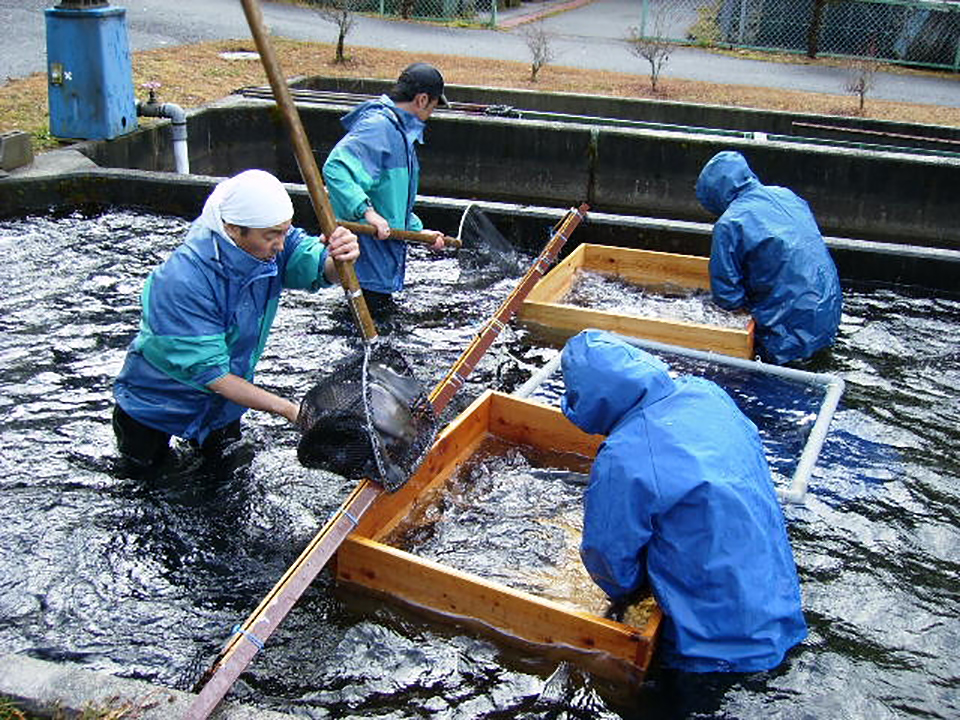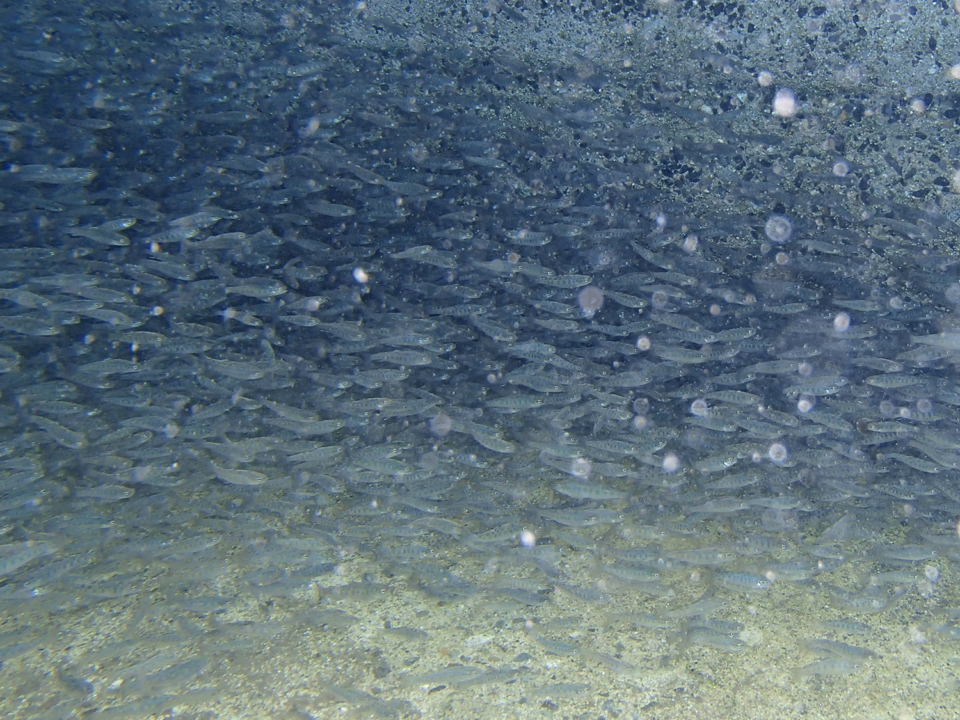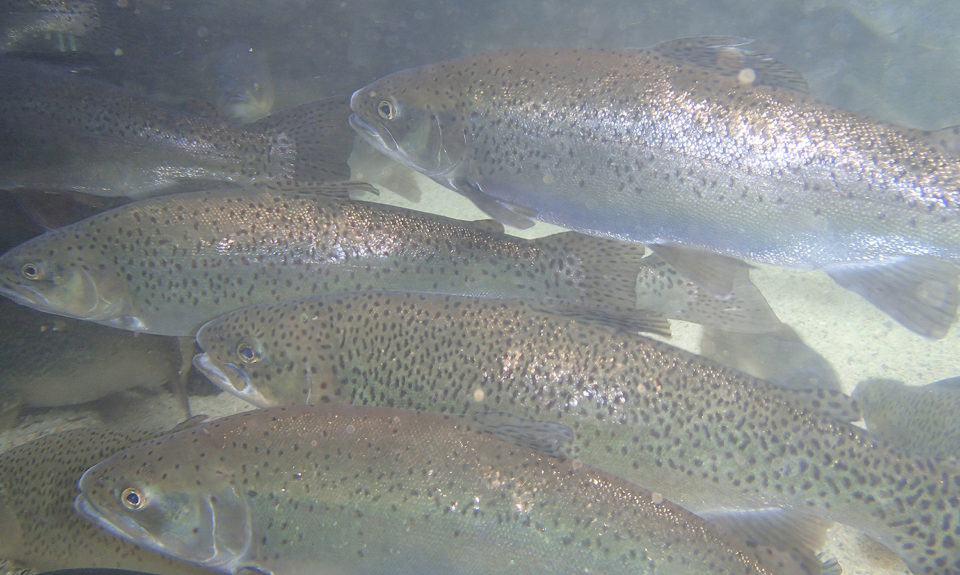The mountainous prefecture of Nagano, once called Shinshu, is tapping into the country’s demand for salmon (and trout) with a unique buy-local initiative

In Japan, tuna is usually the crowning glory of sushi and sashimi meals. But according to Tokyo-based seafood firm Maruha Nichiro, salmon has been consumers’ most popular choice for several years running.
Most of the salmon that’s sold in Japan is imported from Chile and Norway but the species’ popularity is now driving the expansion of domestic salmon farming. Tetsuro Sogo, chief operating officer at FRD Japan north of Tokyo, is tapping into the potential of land-based farming using bacteria-based filtration technology.
“Salmon farming needs cold water of under 15 degrees-C. In Japan, this makes year-round harvest difficult but farming inland keeps temperatures steady. Japan also has a limited number of suitable areas for sea cage farming, like calm inlets or bays,” he told The Advocate.
And according to Erol Emed, president and CEO of a new land-based salmon farm called Soul of Japan, the Japanese consume roughly 400,000 tons of salmon annually and import about 250,000 to 300,000. He says Japan is a key market.
“Japan’s strong demand for salmon hasn’t gone unnoticed,” he said. “It also has good infrastructure in electricity, water and water discharge. This will allow us to deliver steady supplies to our customers.”
As salmon becomes increasingly popular, another species – the very similar rainbow trout – is drawing attention (in Japan, the word trout is often used interchangeably with salmon). In the landlocked, mountainous prefecture of Nagano in central Japan, a hybrid farmed trout called Shinshu salmon (Shinshu is the historic name for Nagano) is now being promoting it as a food that is typical of the region. Now is the time for the prefecture to capitalize on the popularity of salmon in Japan.

Shinshu salmon is an all-female sterile triploid produced by the Nagano Prefectural Fisheries Experimental Station in the prefectural city of Azumino. After years of trial and error, the station successfully produced the fish for the first time in 2004 by crossbreeding female rainbow trout and male brown trout.
“Shinshu salmon is a brand that’s distinct to Nagano and cannot be farmed outside the prefecture. We’re the only institution in Japan that keeps rainbow trout and brown trout on an industrial scale,” said Shigeru Ogawa of the Nagano Prefectural Fisheries Experimental Station.
After collection between October and December, the fertilized eggs are incubated and reared in freshwater. Between June and July, when they weigh 2 to 5 grams each and are 7 to 10 cm long, the juveniles are transferred to local fish farms for growth to market size. It takes two to three years for the species to reach two or three kilograms, at which point it’s ready for sale.
But this length of time requires a large number of ponds to rear the fish and separate them according to size for further rearing. In small-scale farms, this can limit the amount of production. Meanwhile, feed costs are another issue due to rising fishmeal prices. Despite the challenges, the station has increased juvenile production after expanding its facilities, while research on better techniques for salmon farming is underway. Producers are keen to learn how Shinshu salmon could be reared in less time and how a consistently high growth rate could be achieved.
Shinshu salmon’s rich, savory flavor has been a hit among Japanese consumers. Because female salmonids store nutrients in their eggs, the quality of their flesh can change and its taste can deteriorate temporarily. But Shinshu salmon don’t reproduce, so nutritional resources aren’t retained to make eggs. In addition, the fish appear to be resistant to diseases that often infect rainbow trout. But most importantly the product looks appealing to consumers.
“Shinshu salmon has a very smooth, melt-in-your-mouth taste and texture,” said Ogawa. “Its features are its beautiful silver body and stunning crimson flesh, just like ordinary salmon. It has a fine texture with thick flesh and a strong taste.”

Today Shinshu salmon is mainly supplied to accommodation facilities and restaurants in Nagano prefecture but some is shipped elsewhere in Japan, such as Tokyo and Osaka, where it’s also popular in restaurants.
The shipment volume of Shinshu salmon has increased significantly, rising from 38 metric tons in fiscal 2005 to 415 tons in fiscal 2018 according to the Nagano Prefectural Government. In 2019, thanks to the expansion of its production facilities, the station increased the number of juvenile fish it supplies to approximately 400,000. It’s aiming to increase its shipment volume to 450 tons by fiscal 2022.
“Our goal is to further improve our high product quality,” said Ogawa. “There are over 100 local salmon brands across Japan. To ensure that we stand out, we’ll need to look further at new sales strategies. Right now, we’re focusing on developing a new type of farmed breed that will follow on from Shinshu salmon. The popularity of salmon in Japan is a great opportunity for us to increase our presence across the country.”
Despite the increasing popularity of salmon, Sogo says that Japan’s homegrown salmon only has a small slice of the market at approximately 10 percent, while fresh Atlantic salmon from Norway and frozen trout from Chile remain more popular. He hopes that Shinshu salmon will play a significant role in highlighting Japan’s efforts to farm salmon.
“Shinshu salmon is a pioneer of salmonids that are produced in Japan,” he said. “It’s becoming more popular and production has been growing steadily. Because salmon farming is gaining ground, the Ministry of Agriculture, Forestry and Fisheries recently extended support toward the offshore farming of coho salmon. Thanks to this, work is underway to farm at sea during winter in cooler regions like Aomori prefecture north of Japan, where periods of low sea temperatures below 18 degrees-C 64.4 degrees-F) are longer than other regions.”
“There may be further support for other salmon farming initiatives. I hope that Shinshu salmon will help to draw even more attention to what Japan is doing in this field.”
Follow the Advocate on Twitter @GAA_Advocate
Now that you've finished reading the article ...
… we hope you’ll consider supporting our mission to document the evolution of the global aquaculture industry and share our vast network of contributors’ expansive knowledge every week.
By becoming a Global Seafood Alliance member, you’re ensuring that all of the pre-competitive work we do through member benefits, resources and events can continue. Individual membership costs just $50 a year. GSA individual and corporate members receive complimentary access to a series of GOAL virtual events beginning in April. Join now.
Not a GSA member? Join us.
Author
-

Bonnie Waycott
Correspondent Bonnie Waycott became interested in marine life after learning to snorkel on the Sea of Japan coast near her mother’s hometown. She specializes in aquaculture and fisheries with a particular focus on Japan, and has a keen interest in Tohoku’s aquaculture recovery following the 2011 Great East Japan Earthquake and Tsunami.
Tagged With
Related Posts

Intelligence
Octopus aquaculture – unethical or the next Big Thing?
A team of scientists recently made the case against octopus farming, but others believe in its potential. What lies behind this emerging aquaculture opportunity?

Innovation & Investment
Japan hopes aquaculture can save bluefin tuna
Bluefin tuna may be the most prized fish in the ocean. If hon-maguro sashimi is to remain chic, closed-cycle aquaculture may help keep it on menus.

Innovation & Investment
Japan to set sustainability efforts in Olympics spotlight
With all eyes on Japan for the 2020 Olympic Games, leading advocates for responsible aquaculture there see a key opportunity to make stronger sustainability commitments.

Intelligence
In Japan, tiger puffers find themselves in hot water
A technique to farm tiger puffers in hot spring water was invented to revitalize the town of Nasu-karasuyama and is now spreading to other areas of Japan.

